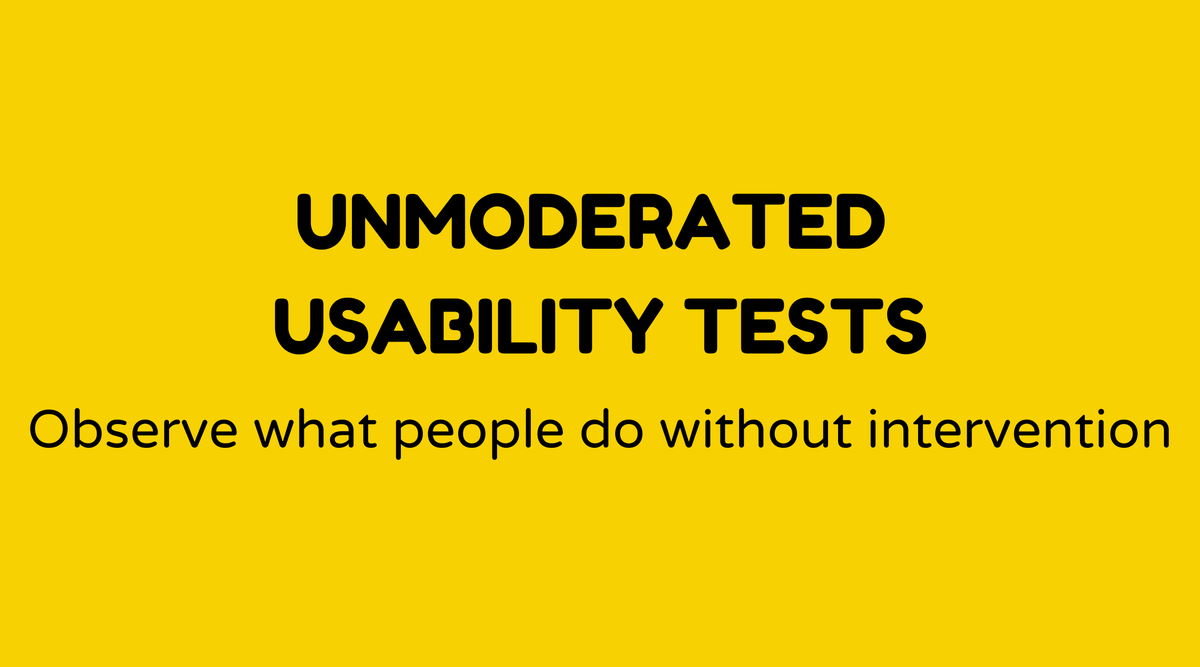Unmoderated Usability Testing

Overview of Unmoderated Usability Testing
Unmoderated Usability Testing is becoming increasingly prominent in product development. This approach enables businesses to gather varied insights by observing how real users interact with a product in their everyday surroundings. It bypasses the formalities of moderated sessions and provides authentic user feedback that is essential for refining products.
In this context, it’s important to understand the mechanics of this method and its numerous advantages. Let’s take a closer look at the key aspects of this testing technique.
Why Unmoderated Usability Testing Matters
The importance of unmoderated usability testing is immense. This approach allows companies to engage a broader range of participants worldwide, breaking free from geographical limitations. Consequently, feedback tends to be more diverse and representative.
This methodology is also budget-friendly. Without the need for a moderator to oversee each session, brands can reduce costs while conducting extensive tests. It also accelerates the process; teams receive results more swiftly, leading to faster iterations and enhancements. Plus, there's the added benefit of flexibility; testers can participate at a time that suits them, reflecting real-world usage patterns.
What is Unmoderated Usability Testing?
What exactly does this method entail? Unmoderated usability testing involves assessing a product without guidance from a tester or moderator. Participants engage with the product independently, completing tasks or answering questions set by the test creator.
Software platforms facilitate this process by guiding users through a series of tasks and recording their interactions. These platforms can document screen activity, collect user feedback, and compile performance metrics. This hands-off strategy can frequently reveal unexpected usage behaviors that might not appear in a controlled environment.
How do you conduct Unmoderated Usability Testing?
To effectively implement unmoderated usability testing, follow these steps:
-
Define Clear Objectives: Before proceeding, clarify what you wish to achieve with the test. What specific user issues or aspects of the product do you want to better understand?
-
Select the Right Tool: Choose a testing platform that meets your requirements. Look for one that provides strong data tracking and user-friendly interfaces.
-
Create Engaging Tasks: Create tasks that align with realistic scenarios. These tasks should guide users smoothly through typical interactions with your product.
-
Recruit the Right Participants: Your insights are only as meaningful as the relevance of the participants. Aim for a representative sample of your target demographic.
-
Analyze Results: After collecting data, thoroughly examine the analytics. Search for patterns or issues you hadn’t anticipated.
-
Implement Changes: Use the insights gained to inform design adjustments or prioritize features. Testing doesn’t end here; iterate and retest.
Examples of Unmoderated Usability Testing
The effectiveness of unmoderated usability testing is visible across various sectors:
-
E-commerce: Online retailers assess the checkout process to identify drop-off points and enhance the user journey.
-
Software Applications: Apps undergo testing to uncover usability issues users face when navigating new features.
-
Websites: Companies evaluate content engagement by examining how users interact with site layout and content structure.
-
Marketing Campaigns: Advertising agencies test to gauge the visual appeal and intuitiveness of their creatives.
FAQs
What are the key advantages of unmoderated usability testing?
Unmoderated testing provides flexibility, efficiency, and cost savings, delivering real-world insights without geographic constraints.
How do I ensure participants are my target users?
Recruit from your target demographics or use testing platforms that offer recruitment services to match user profiles to your criteria.
How long should unmoderated usability tests last?
Keep tests brief, ideally around 20-30 minutes per session, to maintain participant engagement and collect focused insights.
What tools are recommended for conducting these tests?
Consider platforms like UserTesting, Lookback, or Maze, which provide strong analytics capabilities and user-friendly experiences.
Can I conduct unmoderated usability testing on mobile devices?
Of course! Many tools support mobile testing, allowing participants to use their smartphones or tablets for a more natural experience.
What precautions should I take with data privacy in unmoderated testing?
Ensure compliance with data privacy regulations such as GDPR. Utilize platforms that prioritize security and anonymized insights.



